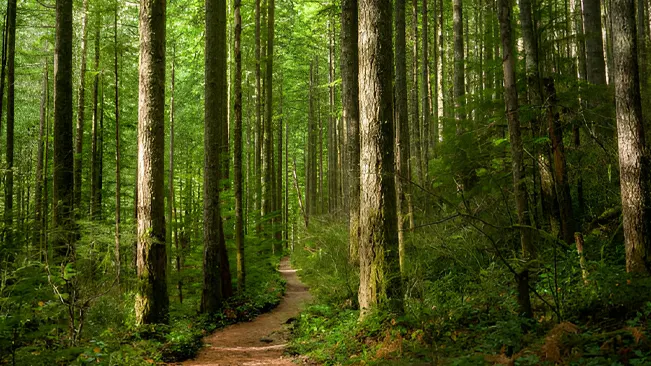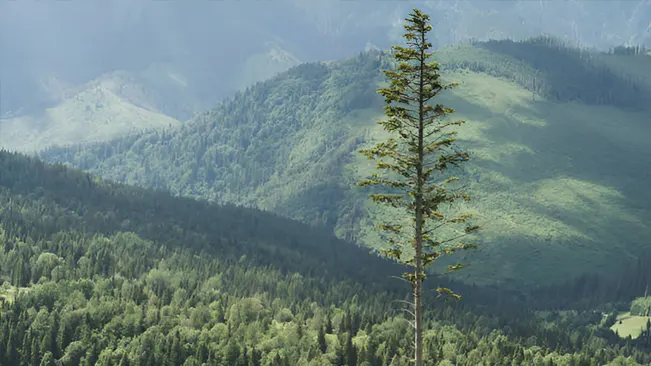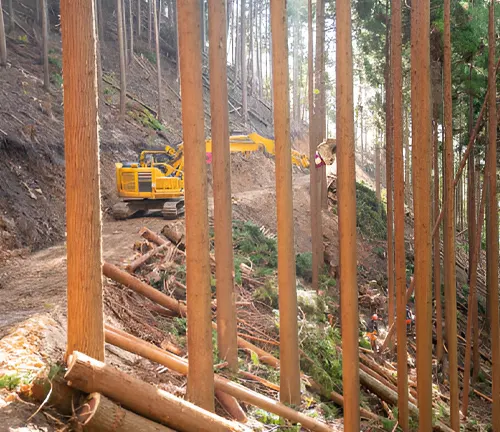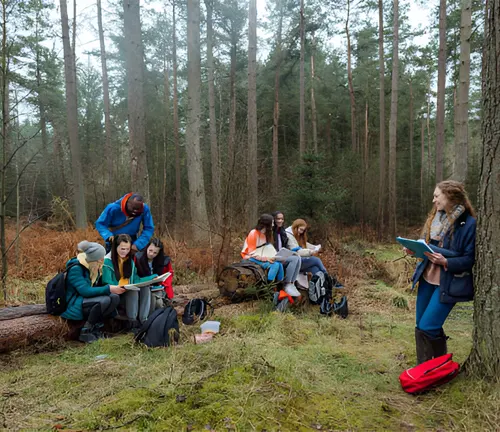What is Structural Diversity in a Forest?
- August 16, 2024
- 0 comment
Structural Diversity in Forests is among the most dynamic and complex ecosystems on the planet. They provide habitat for countless species, store carbon, regulate climate, and offer resources vital to human survival. Within these vast woodlands lies a concept essential to understanding their health and function structural diversity.

This term encompasses the various layers and physical arrangements within a forest, ranging from towering trees to the understory shrubs and ground-level ferns. Structural diversity plays a crucial role in supporting biodiversity and ensuring the resilience of forest ecosystems. But what exactly is structural diversity, and why is it so important?
Understanding Structural Diversity
Defining Structural Diversity in a Forests
Structural diversity in a forest refers to the variety of physical forms and arrangements of vegetation present within the ecosystem. It includes the vertical and horizontal distribution of plants, varying tree heights, canopy layers, and the composition of different plant species. This complexity contributes to the habitat heterogeneity necessary for supporting diverse animal and plant life.

Components of Forest Structure
The structure of a forest can be broken down into several components, including:
- Canopy Layer: The uppermost layer formed by the crowns of mature trees. This layer is critical for photosynthesis and habitat for many species.
- Understory Layer: This consists of young trees, shrubs, and herbaceous plants growing beneath the canopy, offering shelter and food for various organisms.
- Forest Floor: The lowest layer, rich with leaf litter, decomposing organic matter, and soil organisms. It plays a vital role in nutrient cycling.
- Vertical Stratification: This refers to the varying heights of trees and plants, providing niches for different species of wildlife and increasing biodiversity.
Horizontal Complexity
In addition to vertical layers, horizontal diversity refers to the spatial distribution of plant species and physical features across the landscape. This includes the presence of gaps, patches of different vegetation types, and variations in soil composition and moisture levels.
Importance of Structural Diversity
Biodiversity Support
A forest with high structural diversity can support a wider variety of species. Different plant and animal species rely on specific habitats or niches to thrive. For instance, birds might require certain canopy structures for nesting, while small mammals may need dense underbrush for cover. The presence of various layers and microhabitats ensures that many organisms can coexist.

Enhanced Ecosystem Services
Structural diversity contributes to ecosystem services like carbon sequestration, water regulation, and soil fertility. A multilayered forest captures more carbon and promotes efficient nutrient cycling, improving overall ecosystem health.
Factors Influencing Structural Diversity
Natural Disturbances
Events like fires, storms, and insect outbreaks can create structural diversity by altering tree density and opening up the canopy. These disturbances allow for new growth and regeneration, maintaining a mosaic of different successional stages within the forest.

Climate Change
Climate change can alter precipitation patterns, temperature ranges, and the frequency of disturbances, impacting structural diversity. Forests may need to adapt to these changes to maintain their complex structures.
The Role of Structural Diversity in Forest Ecosystems
Nutrient Cycling and Soil Health
The various layers of a structurally diverse forest contribute to efficient nutrient cycling. Fallen leaves and decomposing organic matter from different plant species enrich the soil, promoting a healthy and productive forest floor. This diversity in plant material supports a rich community of decomposers, like fungi and bacteria, that break down organic matter into nutrients accessible to plants.

Water Regulation and Climate Moderation
A diverse forest structure enhances the ecosystem’s ability to regulate water. Canopies intercept rainfall, reducing soil erosion, while root systems increase water infiltration and retention. Additionally, forests moderate local climates by providing shade and maintaining humidity levels, which are crucial for many plant and animal species.
Measuring Structural Diversity
Remote Sensing Technologies
Advanced technologies like LiDAR (Light Detection and Ranging) and satellite imagery allow researchers to assess forest structure from above. These tools provide detailed data on tree height, canopy cover, and vegetation distribution, enabling scientists to monitor changes in structural diversity over time.

Field Surveys and Sampling
Traditional methods of assessing structural diversity involve ground-based surveys and sampling. Researchers measure tree diameters, count species, and assess canopy layers to gain insights into the physical complexity of forests.
Indicators of Structural Diversity
Indicators such as species richness, canopy cover variability, and age distribution of trees help gauge the structural diversity of a forest. These metrics provide valuable information for conservation and management efforts.
Enhancing Structural Diversity Through Forest Management
Sustainable Forestry Practices
Implementing sustainable forestry practices can help maintain or enhance structural diversity. Techniques like selective logging, controlled burns, and creating forest reserves aim to preserve complex structures while allowing for resource use.

Restoration and Conservation Efforts
Restoration projects focus on re-establishing native vegetation and promoting natural regeneration processes. These efforts enhance structural diversity by encouraging a variety of species and age classes to develop within the forest.

Community Involvement and Policy Initiatives
Engaging local communities in conservation initiatives fosters a sense of stewardship and ensures that forest management strategies align with ecological and cultural values. Policy initiatives that prioritize biodiversity and structural diversity in land-use planning are crucial for long-term forest sustainability.

Challenges to Structural Diversity
Deforestation and Habitat Fragmentation
Deforestation and habitat fragmentation pose significant threats to structural diversity. The loss of large tracts of forest reduces habitat complexity, leading to decreased biodiversity and ecosystem resilience.
Invasive Species
Invasive species can outcompete native plants and alter forest structure, reducing diversity. Effective management strategies are needed to control invasive species and restore native habitats.
Climate Change and Its Impacts
Climate change exacerbates existing threats by altering disturbance regimes and shifting species distributions. Forests may struggle to adapt, underscoring the importance of preserving and enhancing structural diversity to bolster ecosystem resilience.
Case Studies: Structural Diversity in Action
Tropical Rainforests
Tropical rainforests are renowned for their immense structural diversity. With multiple canopy layers and a rich variety of plant and animal species, these ecosystems exemplify the benefits of complex forest structures. Conservation efforts in regions like the Amazon focus on preserving these intricate systems to maintain global biodiversity.
Temperate Forests
Temperate forests, such as those found in North America and Europe, exhibit diverse structures influenced by seasonal changes. These forests support a range of species adapted to varying conditions, highlighting the importance of maintaining structural complexity in temperate regions.
Boreal Forests
Boreal forests, characterized by coniferous trees and cold climates, display unique structural diversity adapted to harsh environments. These forests play a vital role in carbon storage and provide critical habitat for wildlife, emphasizing the need to protect their structural integrity.
Conclusion
Structural diversity in a forests is a cornerstone of ecological health and stability. By providing a variety of habitats and supporting biodiversity, diverse forest structures contribute to the resilience and functionality of ecosystems worldwide. As forests face increasing pressures from human activities and climate change, understanding and enhancing structural diversity becomes imperative for conservation and sustainable management efforts. Embracing practices that maintain or enhance this complexity ensures that forests continue to thrive and provide essential services for both nature and humanity.
Frequently Asked Questions (FAQs)
- What is structural diversity in a forest?
Structural diversity in a forest refers to the variety of physical forms and arrangements of vegetation within the ecosystem, including the different layers of vegetation from the canopy to the forest floor, and the spatial distribution of plant species. - Why is structural diversity important for forest ecosystems?
Structural diversity is important because it enhances biodiversity, provides a wide range of habitats and niches for different species, supports complex interactions, and contributes to ecosystem resilience against environmental stressors. - How does structural diversity support biodiversity?
A diverse forest structure creates various habitats and microhabitats, allowing multiple species to coexist by meeting their specific habitat requirements. This complexity promotes a rich variety of plant and animal life. - In what ways can human activities impact structural diversity in a forests?
Human activities such as deforestation, urban development, and unsustainable logging can reduce structural diversity by simplifying forest structure. Conversely, sustainable forestry practices and restoration efforts can help enhance diversity in a forests. - How do natural disturbances influence structural diversity in a forests?
Natural disturbances like fires, storms, and insect outbreaks create opportunities for new growth and regeneration, promoting structural complexity by creating a mosaic of different successional stages. - What is the role of the canopy layer in a forest?
The canopy layer, formed by the crowns of mature trees, is crucial for photosynthesis, providing habitats for numerous species, and moderating the microclimate within the forest. - How can technology be used to measure structural diversity in a forests?
Technologies such as LiDAR (Light Detection and Ranging) and satellite imagery allow scientists to assess forest structure from above, providing detailed data on tree height, canopy cover, and vegetation distribution. - What challenges do invasive species pose to Structural Diversity in a Forests?
Invasive species can outcompete native plants and alter forest structure, reducing diversity and impacting the ecosystem’s ability to support a wide range of species. - How does structural diversity contribute to ecosystem services?
Structural Diversity in a Forests enhances ecosystem services like carbon sequestration, water regulation, and soil fertility by promoting efficient nutrient cycling and supporting a variety of plant and animal species. - What strategies can enhance structural diversity in a forests?
Strategies include implementing sustainable forestry practices, conducting restoration projects, promoting natural regeneration, and involving local communities in conservation efforts to maintain complex forest structures.

Evan Bennett
Forestry AuthorEvan Bennett brings over a decade of expertise in forestry wildlife management to the forefront, specializing in habitat conservation, biodiversity, and human-wildlife interaction. Evan's work ensures harmonious coexistence between wildlife and human communities through effective and sustainable practices. Continuously engaging in research and workshops, Evan stays at the cutting edge of wildlife management advancements. As a trusted advisor and contributor to leading environmental journals, Evan is dedicated to preserving the natural world for future generations.










Leave your comment